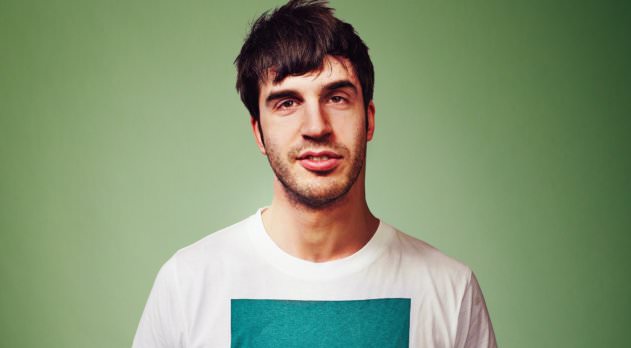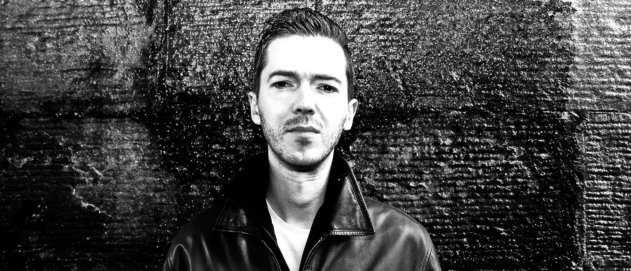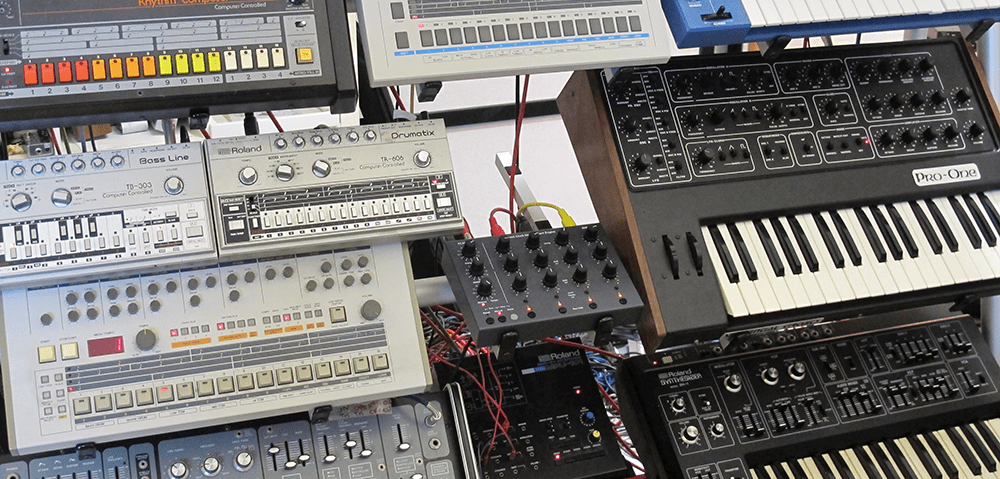
KORNEL KOVACS
One part of the Studio Barnhus trio, based in Sweden and behind a number of hugely inventive and off-kilter jams.
My recent work was all started in my bed with a laptop
Well, yeah, sometimes I can’t always make the tune in my head because of the limitations of my tools, but I think that’s true for all music to some extent, from the times when people were making flutes out of bear bones up until today. I believe any sound one could imagine could theoretically be created at any point in history, but it’s obviously much quicker and easier today than ever before. Today the limitations lie in the way we listen to music – as in how speaker systems are standardised – rather than in the music production tools.
For me, technology is bad at the beginning of a process and good at the end. My recent work was all started in my bed with a laptop, developed at Studio Barnhus where I have a limited amount of equipment that I’m comfortable with, and then finished at Nacksving, a really luxurious studio in Gothenburg where I have access to every piece of analogue or digital equipment I could wish for (and Matt Karmil, who knows how to use it all).
acid house, or any musical movement, wasn't created from scratch but built on many things that came before it.
My music never really comes out exactly like I imagined it – sometimes not even close – but that’s part of the art. I rely heavily on good luck and happy accidents. Take ‘So So Solid’ from my latest EP on Studio Barnhus, for example: I was working on a vocal sample and accidentally punched in the wrong EQ settings – a super heavy bass boost where I was reaching for a bass cut – and all the background noise in the audio morphed into this gorgeous, swooshing sub-bass sound. Or ‘Gangsta’ on my upcoming EP for Numbers, which came about after I was moving some files around and tricked Ableton’s Sampler into triggering the wrong sample. That’s how I got the main hook going.
When I first discovered electronic music I would get this otherworldly sensation, a sense of delight mingled with alien terror, from listening to all those strange sounds. I really couldn’t understand how the music was created. I might not get that feeling as often today. But that has more to do with me, my age and my work, than with the current times, I’d like to believe. It’s important to remember that acid house, or any musical movement, wasn’t created from scratch but built on many things that came before it. There are even ancient acoustic instruments that can produce the same type of resonant tones that the 303 is known for.

THE REVENGE
The Scottish DJ, producer and label boss has very much been at the heart of the disco house revival and is just about to launch his debut album, Love That Will Not Die.
Ever since man could clap his hands or bang a drum, dance music has existed. I’ve always just used what I could get my hands on to make music. My problem is that I have too many ideas, but having less equipment wouldn’t change that.
Bands like Kraftwerk were revolutionary when they appeared because they were using equipment nobody else had
I think it’s harder to shock people because music is probably more transient now. People have shorter attention spans so they move onto the next thing quickly. ‘Acid’ was just another term used to pigeonhole music into a category to help shift units. It gives us all something to talk about, like the emperor’s new clothes. Same went for ‘heavy rock’ or ‘soft rock’. I pay no attention to genre when buying or producing music, it’s just a distraction for me. Bands like Kraftwerk were revolutionary when they appeared because they were using equipment nobody else had to make their music, which already had its own presence anyway. The image, sound and presentation were so striking that it was hard to ignore. When the laptop appeared the floodgates opened - anything was possible if you have a big enough hard drive. Technology has become so homogenised that the focus is even more on the expression and delivery of the message.
I find more choice is more restricting because it’s harder for the original idea to breathe. I’ve stripped down my studio over the years, and am still refining it to be as streamlined as possible. So there’s less distance between the original idea and what comes out the speakers. It’s vital in the studio to capture the lightning in a bottle when it strikes.
In terms of workflow, Ableton changed everything for me. It made capturing an idea, jamming and arranging a fluid process. The production and live aspect of making and performing music became one. In terms of sound sources, I’m always changing. One of the first game changers for me was the Akai MPC60. When I first got it around 2002, I went from using Logic to sequence my music, to using the MPC for everything. It was a conscious decision to get back to the groove and restrict myself. I used it for exactly a year for everything before I took the shackles off. Nowadays the Moog Voyager is vital for my basslines and I still use my Waldorf Microwave XT, which is the first synth I bought, around 17 years ago, for chords and pads.
When I first discovered sidechaining I went bonkers using it on everything.
When I first discovered sidechaining I went bonkers using it on everything. I think my remix for Kenneth Bager on Music For Dreams a few years back struck the balance on the sidechaining thing for me: it still had a pump to it, but the elements could breathe, too. I know much better what I’m looking for now and know how to get it, but I still enjoy the experimentation of jamming.
The track ‘MWI’ was one of those jamming sessions where I just had a the beat and was fucking around with the Moog. It all came together really quickly and in some ways became the blueprint for how the live setup would be formed. I found a way of working that could be improvised and layered to give me what I wanted in terms of sonics. It also had that lion’s roar in it, which connected it to the label. Doing the live shows now is an important step for me in opening up the possibilities of taking a riff or a sequence and pulling it apart and going somewhere else with it.

10.53 PM
Of course technology defines Dance Music. Always has, always will. It’s the medium by which we ply our craft. So many iconic machines have shaped the future of production…. MPC, 808, 909, SP1200, S950, DX7, etc, etc, ….. To me it’s kind of the reason we are in a rut. We need a technology revolution like we had in the 70’s-80’s to shake things up.
10.53 AM
a poor tradesman always blames his tools…
03.20 PM
There is no question that technology initially had a huge impact on the evolution of dance music. But it was the artists that used the technology that were responsible for the defnition..
12.48 PM
I think some Ipad music apps will bring new influence.
Korg Gadget is a multi instrument music studio with incredible sounds – compatible to Ableton.
The Korg Volca series is another small revolution. Cheap, analog, easy to use.
07.31 AM
In the early years the equipment available was limited compared to today, no MIDI for example. Today there are a hundred times more options for making music and thousands more options available in the box. If you can’t make music with all those options then the music in not in you. But wait, if you were given a 909 and a 303 and couldn’t make music with them, the music in not in you. So how cans technology define music? People define music. I saw it in Detroit every weekend.